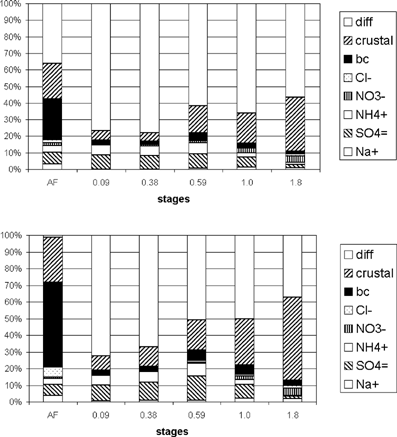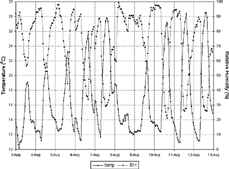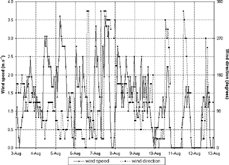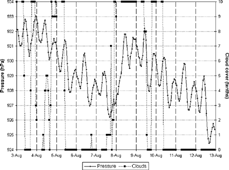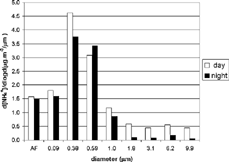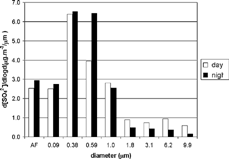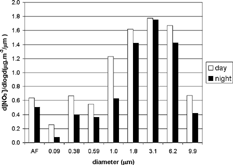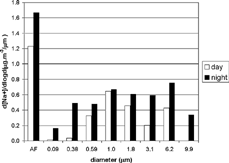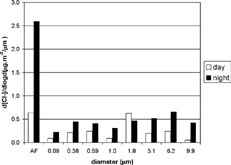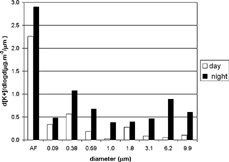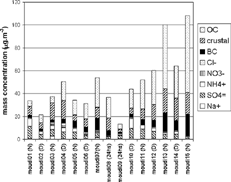Figures & data
FIG. 1 Metropolitan Area of São Paulo (MASP), aerosol sampling site (IAG-CUASO) and climatological station (IAG-AF).
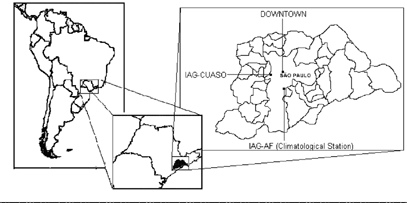
TABLE 1 MOUDI sampling description and total concentrations (in μ g · m− 3) obtained by the summing of all MOUDI stages and the afterfilter
FIG. 5 FPM and CPM calculated by the summing of the mass concentration (above) and black carbon concentration (below) in stages with a d50 of less than 2.5 μ m (considered FPM) and in those with a d50 between 2.5 and 10 μ m (CPM) for nocturnal (N), diurnal (D), and 24 h sampling.

TABLE 2 Daytime and nighttime mass and black-carbon average concentrations (in μ g · m− 3) as a function of particle size
FIG. 6 Mass (above) and black-carbon (below) size distribution averaged for daytime and nighttime periods.
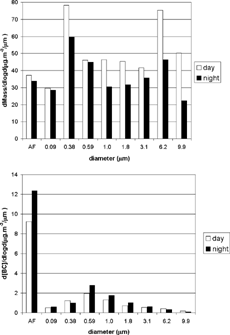
TABLE 3 Daytime and nighttime mass concentrations (in μ g · m− 3) of inorganic cations as a function of particle size
TABLE 4 Daytime and nighttime mass concentrations (in μ g · m− 3) of inorganic anions as a function of particle size
TABLE 5 Daytime and nighttime concentrations (in nequ · m− 3) of cations and anions as a function of particle size
FIG. 13 Daytime (above) and nighttime (below) averaged size-resolved mass balance for the five lower stages of the MOUDI and the afterfilter.
